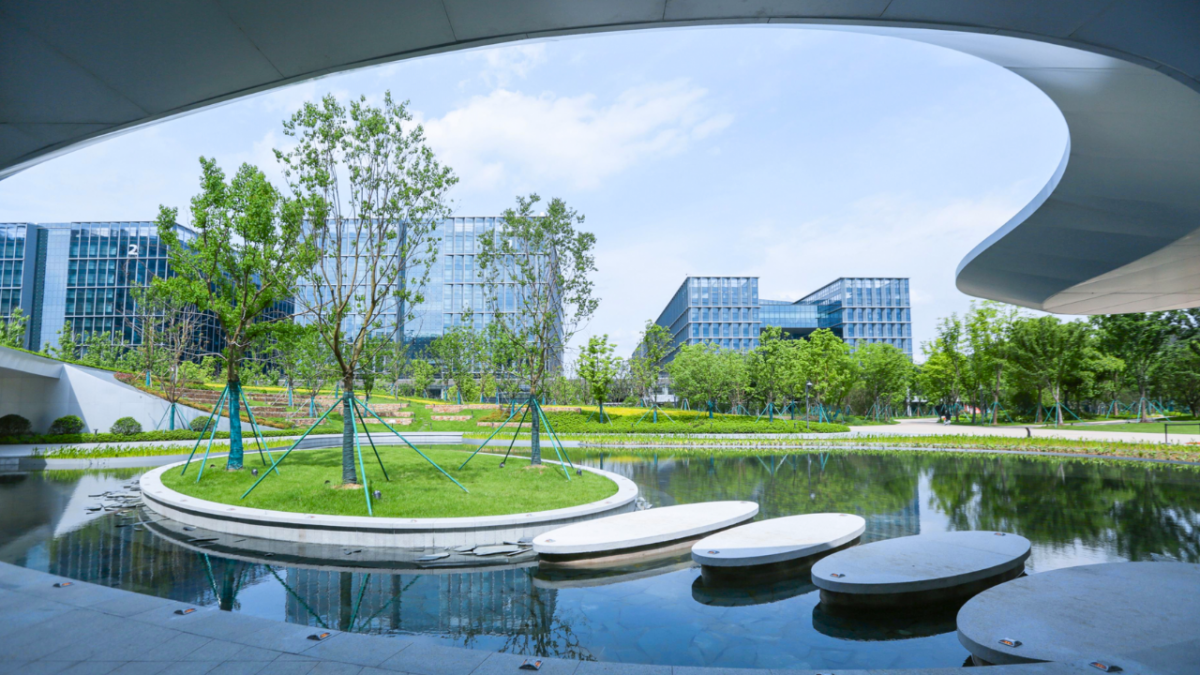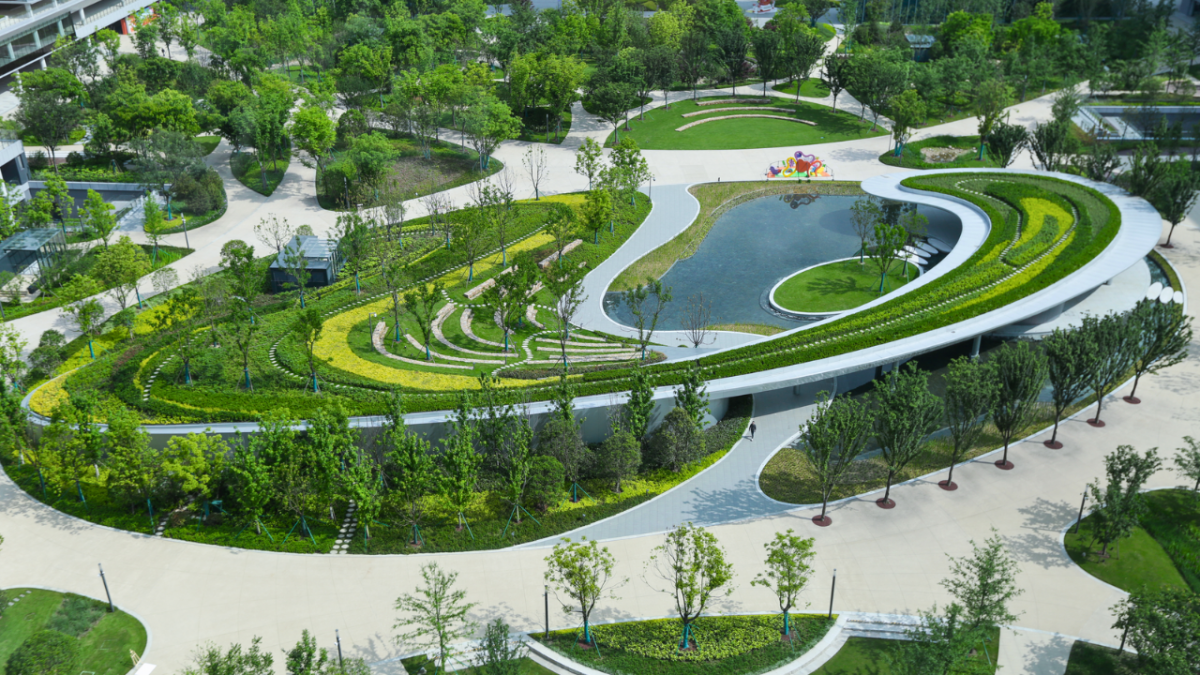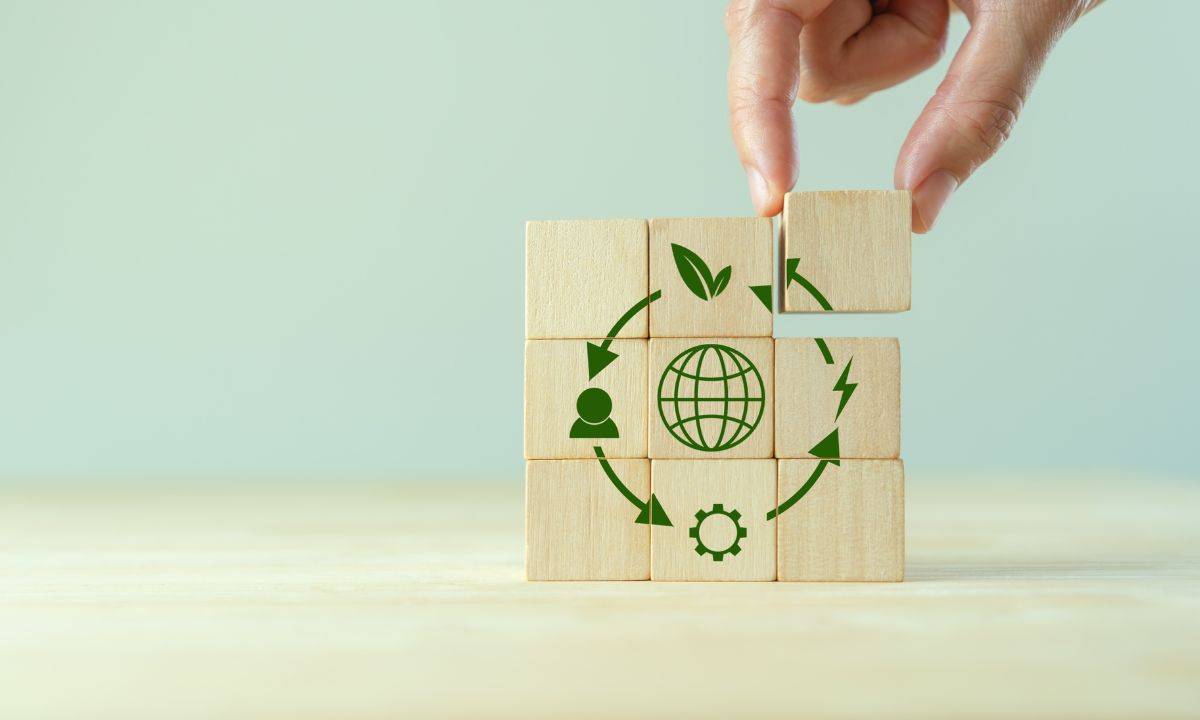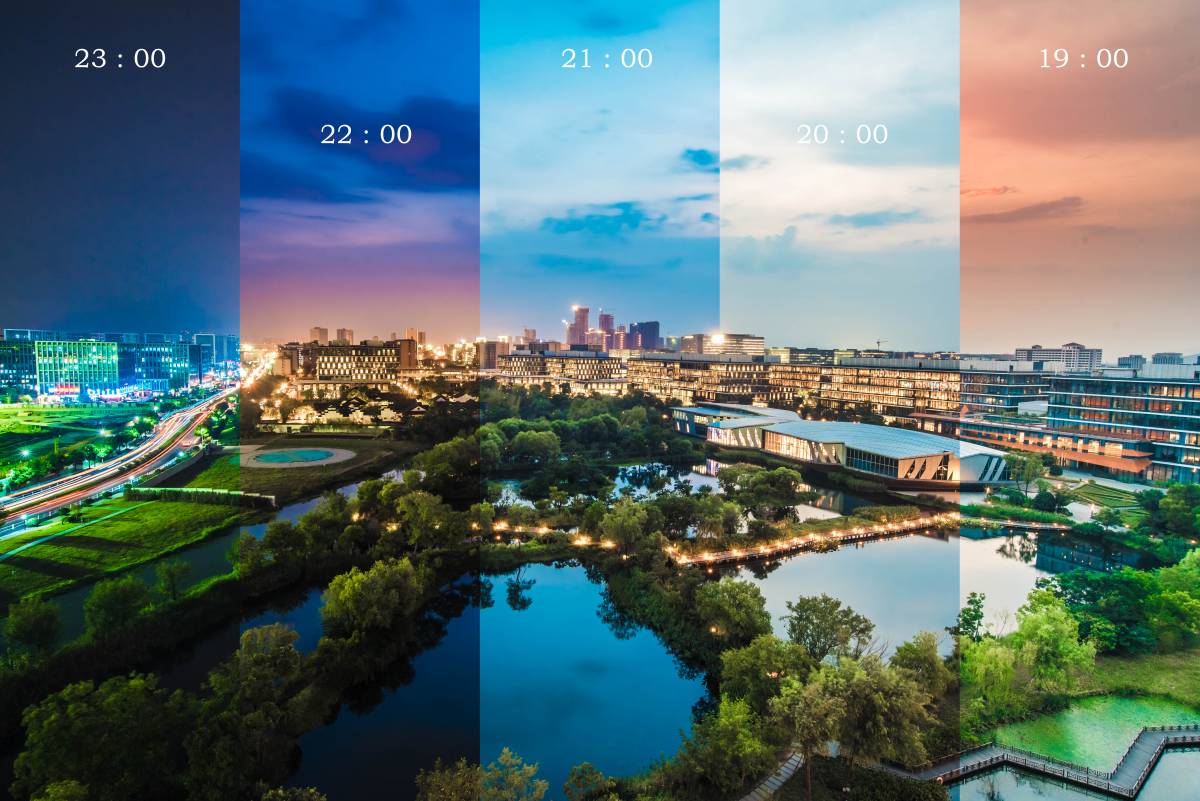
A view of Alibaba’s new global headquarters. Photo credit: Alibaba Group
June 5 marks the United Nations’ World Environment Day, a time to raise awareness and take action to protect ecosystems worldwide.
This year, the UN Environment Programme has picked the theme of land restoration – an area in which Alibaba Group leads by example.
The platform company recently cut the ribbon on its global headquarters in Hangzhou, where sustainable water systems, protected habitats and workspaces exist side by side.
The campus is green inside and out and has already received a Leadership in Energy and Environmental Design (LEED) gold certification for office communities.
Scroll down to explore Alibaba Xixi Global Headquarters Park with Alizila



Rooted in the Environment
Alibaba’s new campus leverages the wider ecosystem to reduce its impact on the environment and support protected species from the nearby wetland.
Its six office buildings radiate outward from a central garden populated by native plants such as pomelo, loquat, bayberry and pomegranate, all tasty treats for birds residing at the Xixi wetlands.
The surrounding grounds are dotted with tree groves to encourage carbon fixation and interlaced with rain gardens and permeable sidewalks to maximize the use of water resources.
Up to 23,000 cubic meters of rain can be collected and stored on the campus to be later deployed for site irrigation, and the campus is capable of recycling up to 60 tons of drinking water and wastewater per day.
Solar panels across the campus have an annual power generation capacity of about 400,000 kWh – enough energy to power around 37 American households for a year.
Meanwhile, the buildings themselves are shaped to optimize the amount of natural light and food waste processing facilities located in the basements of each office tower generate organic fertilizer.



Shaping Green Behavior
In the midst of all this verdant abundance, the campus is designed to encourage eco-friendly choices among the people who work inside it.
The site, housing workstations for 30,000 people, is connected to a subway line and several bus routes to encourage public transportation use. In addition, 12% of the car spaces within its two-story underground garage can be used for electric vehicle charging.
Signs dotted across campus explain the perks of green choices, whether leaving fruit on trees for birds to eat or taking the stairs to save carbon emissions. As part of a company-wide carbon reduction promotion program, employees can track and be rewarded for these types of actions.
In 2023, over 100,000 employees completed more than 1.25 million low-carbon business trips, reducing their carbon footprint by more than 6,000 tons.



High-Tech Solutions
From air conditioning to lighting, amenities at the new global headquarters are controlled by an AI-powered online program that uses data to reduce carbon emissions.
The system, called ‘Carbon Reduction Brain,’ measures weather conditions, foot traffic across the site and historical data to predict when facilities will be used and optimize office conditions while minimizing environmental impact.
With its help, the platform company’s two other office parks in the area reduced their carbon emissions by more than 2,866 tons in fiscal year 2023.
The campus’ overall planning and design comply with national two-star green building standards, and it plans to apply for more LEED and WELL certifications.




